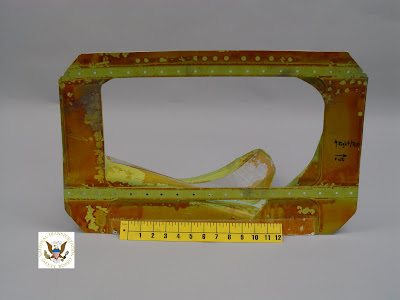 The U.S. National Transportation Safety Board (NTSB) has just released two photos from their investigation of the Southwest Airlines Boeing 737-300 cabin depressurization incident on July 13, 2009. The aircraft (registration N387SW), which had been en route from Nashville to Baltimore-Washington International Airport, diverted to Charleston, WV where it made a safe emergency landing. A hole in the crown of the fuselage apparently led to the depressurization.
The U.S. National Transportation Safety Board (NTSB) has just released two photos from their investigation of the Southwest Airlines Boeing 737-300 cabin depressurization incident on July 13, 2009. The aircraft (registration N387SW), which had been en route from Nashville to Baltimore-Washington International Airport, diverted to Charleston, WV where it made a safe emergency landing. A hole in the crown of the fuselage apparently led to the depressurization.The two photos released by the NTSB today show "the compromised section of the area of the fuselage that failed in flight."
The first photo (top of this page) shows the section of fuselage skin facing inside the aircraft. The second photo shows the section of fuselage skin on exterior of aircraft.
 The press release accompanying the release of the photos said, in part:
The press release accompanying the release of the photos said, in part:The damaged aircraft skin section was visually examined in the NTSB's Materials Laboratory. The damage left a hole measuring approximately 17 inches by 8 inches. The skin in this area of the fuselage is 0.032 inches thick with an additional 0.032 inch thick layer bonded to the interior surface in selected areas.You can click on either of the photos to obtain a larger copy from the NTSB web site.
[ NTSB Acting Chairman] Rosenker said that the initial visual examination found the fractures in good condition and suitable for further analysis. No significant corrosion or obvious pre-existing mechanical damage was noted. A detailed metallurgical examination of the skin section and the fracture surfaces will be accomplished by the Safety Board in the coming days.
Southwest Airlines is now in the process of repairing the aircraft at Yeager Airport, Charleston, West Virginia.
[Photo Source]
